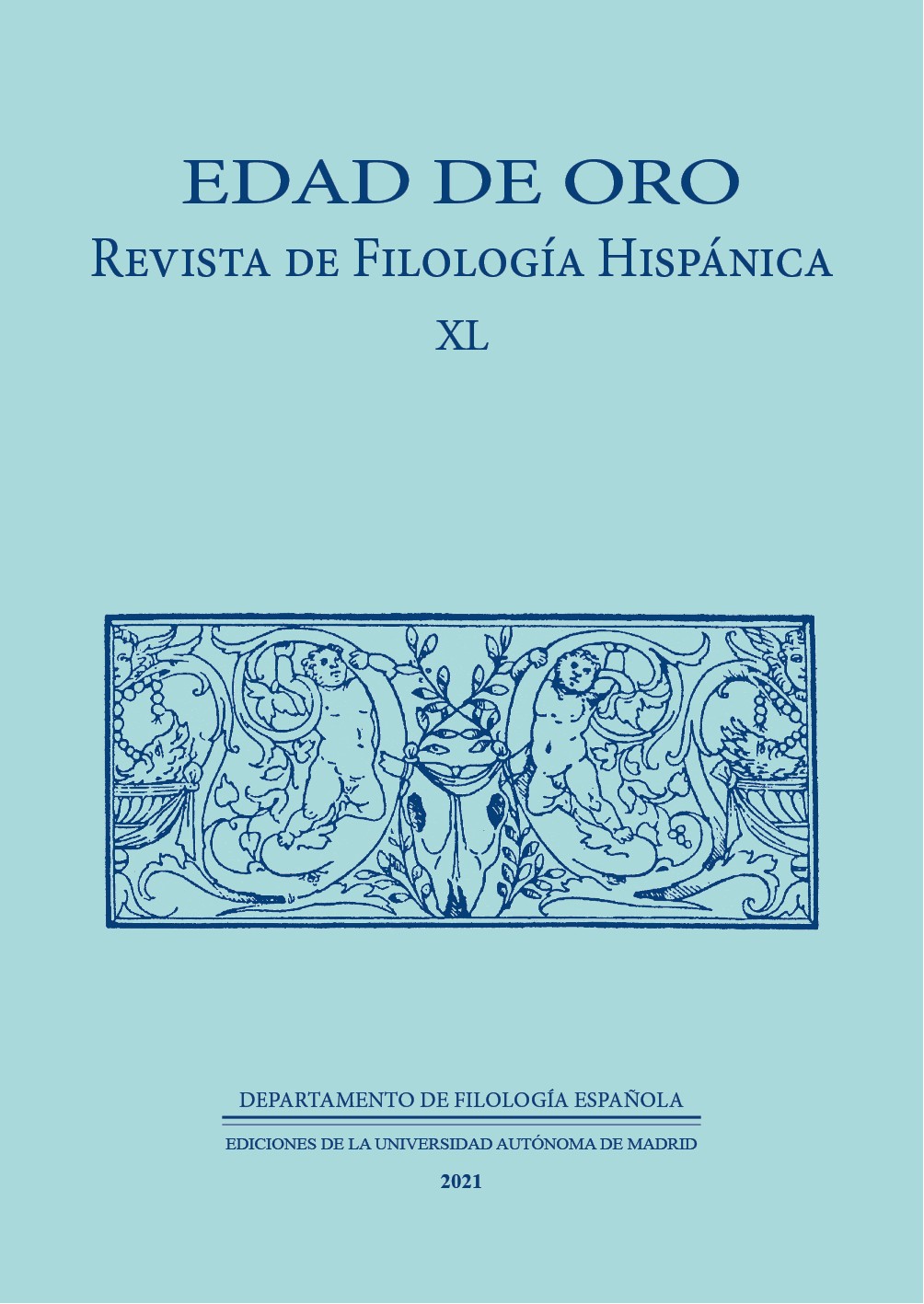The beauty of the ugly: re-reading the "Persiles" episode in Rome in the light of "The Spanish English Lady"
Keywords:
The Spanish English Lady, The Trails of Persiles and Sigismunda, beauty, ugliness, poetics of border crossingCopyright (c) 2021 Ruth Fine

This work is licensed under a Creative Commons Attribution 4.0 International License.
Abstract
The present work analyzes the specular relationship between two episodes present in The Spanish English Lady and the Persiles respectively: the poisoning of the heroines, which results in the loss of their beauty and their near death. I claim that both representations of a transitory ugliness configure a game of parallels and mirroring inversions, which constitutes a call to reflection on the paradoxes of the opposites beauty / ugliness both in these novels and beyond. Finally, it will also be suggested that these episodes convey projections of a meta-poetic order, responding in their modalities to the Cervantine aesthetics that I identify as the poetics of border crossing.
Downloads
References
ARISTÓTELES (2010). Poética de Aristóteles. Valentín García Yebra (trad. y ed.). Madrid: Gredos.
AVALLE ARCE, Juan Bautista (1982). «Introducción». En Miguel de Cervantes, Novelas Ejemplares. Avalle Arce (ed.). Madrid: Castalia, t. 1, pp. 1-35.
CERVANTES, Miguel de (1997). Los trabajos de Persiles y Sigismunda. Carlos Romero Muñoz (ed.). Madrid: Cátedra.
CERVANTES, Miguel de (1998). «La española inglesa». Novelas ejemplares. Harry Sieber (ed.). Madrid: Cátedra, t. 1, pp. 241-283.
CLAMURRO, William (2012). Beneath the Fiction. The Contrary Worlds of Cervantes's «Novelas ejemplares». Berlín: Peter Lang.
CHINCHILLA, Oscar Delgado (2012). «Towards a Better Understanding of the Ugly in Literature». Revista de Lenguas Modernas, 17, pp. 323-338.
ECO, Umberto (2007). Historia de la fealdad. María Pons Irazazábal (trad.). Barcelona: Lumen.
EGIDO, Aurora (1990). «El Persiles y la enfermedad de amor». En Actas del II Coloquio Internacional de la Asociación de Cervantistas. Barcelona: Anthropos, pp. 201-226.
FINE, Ruth (2006). Una lectura semiótico-narratológica del Quijote en el contexto del Siglo de Oro español. Madrid / Frankfurt am Main: Iberoamericana / Vervuert. https://doi.org/10.31819/9783964563774
FINE, Ruth (2014). Reescrituras bíblicas cervantinas. Madrid / Frankfurt am Main: Iberoamericana / Vervuert. https://doi.org/10.31819/9783954872985
FINE, Ruth (2015). «En torno a la representación de la mujer judía en la obra de Cervantes en el contexto de la literatura del Siglo de Oro español». En Maria Caterina Ruta y Robert Lauer (eds.), «Un paseo entre los centenarios cervantinos». Cuadernos AISPI, 5, pp. 33-46.
GREEN, Otis (1969). España y la tradición occidental: el espíritu castellano en la literatura, desde «El Cid» hasta Calderón. Gredos: Madrid.
LOZANO RENIEBLAS, Isabel (2011). «Tradición y experimentación en "La española inglesa"». En Christoph Strosetzki (ed.), Visiones y revisiones cervantinas. Actas selectas del VII Congreso Internacional de la Asociación de Cervantistas. Alcalá de Henares: Centro de Estudios Cervantinos, pp. 527-534.
PLUTARCO (1992). De audiendis poetis Obras morales y de costumbres (Moralia). En Obra completa. Aurelio Pérez Jiménez y Paloma Ortiz (trad.). Madrid: Gredos, t. 3.
RUTA, María Caterina (1987-1988). «La española inglesa, el desdoblamiento del héroe». Anales Cervantinos, 25-26, pp. 371-382.
RUTA, María Caterina (1998). «La oposición bello/feo entre sustancia y mutación». En Antonio Pablo Bernat Vistarini (coord.), Actas del Tercer Congreso Internacional de la Asociación de Cervantistas. Palma de Mallorca: Universitat de les Illes Balears, pp. 213-222.
SHAKESPEARE, William (1996). Macbeth. Alejandro Querejeta (trad.). Quito: Libresa.

